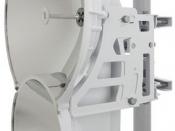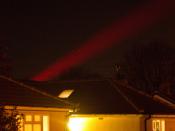Abstract This paper discusses the concept of Wireless Optical Networks (WON), how they will affect the future of networking. It touches various aspects of WON like the innovation in the technology, its effects, the capabilities and its advantages over other networks (Snyder, 2001).
Introduction For the sake of a better understanding the paper begins by comparing free space optics with wireless optics.
Definition Free-Space Optics and Wireless Optical Networking Free-Space Optics (FSO) is wireless (laser-based) communication from one point to another point, where the points have clear line-of-sight between them.
Wireless Optical Networking (WON) is a carrier-grade 'last mile' technology based on a network of interconnected free-space optical communication links. The network provides multiple routes to each building, rerouting around network faults and interconnectivity to other communications networks (Finnet, 1999).
Wireless optical networking is an innovative technology that improves upon the relatively new concept of free-space optics. Traditional free-space optics is based on wireless laser communications between two optical transceivers aligned to each other with a clear line of site (Wiley 2000).
Typically, the optical transceivers are mounted on building rooftops. The optical transceiver consists of a laser transmitter and a detector to provide full duplex capability. Free-space optics enables fast deployment of broadband access services to buildings; the time-consuming and expensive process of getting permits and trenching city roads is completely avoided. The traditional approach is, however, problematic for several reasons: (1) Point-to-point architecture represents a single point of failure; (2) Buildings move and beams can become misaligned; and (3) Atmospheric conditions have significant impact on optical link performance. Availability of a free-space optics link is generally determined by the link length and fog weather patterns in a specific location (Finnet, 1999).
Types of Architecture There are basically three types of network architectures: point-to-point, hub-and-spoke, and mesh. The most...


